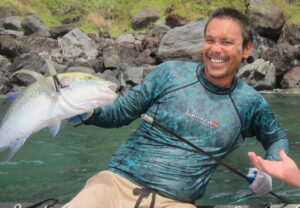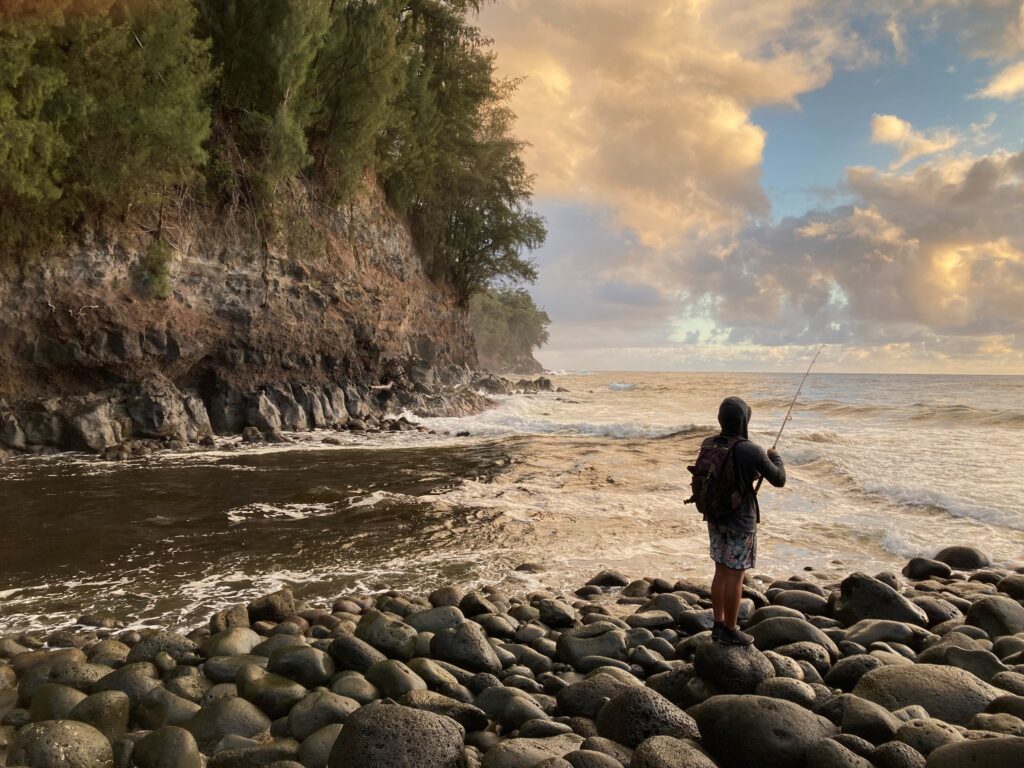Ryan Okano
A Reef Resilience Network Manager’s Story
Hawai‘i’s Reef Restoration Approach
In Hawai‘i, coral reefs protect $836 million worth of coastal infrastructure, provide more than 7 million meals annually, and generate nearly $1 million a day for the local economy. But reef health is declining due to climate impacts and human-related threats. Recently, Hawai’i’s reefs have experienced mass bleaching events caused by marine heatwaves, and projections show the heatwaves are going to become more frequent. Local managers are taking action through planning and reef restoration—a relatively new strategy to help recover damaged coral reefs, and restore reef structure and ecosystem function, and/or increase populations of key species.
As part of the state’s Hawai‘i Coral Strategy 2030, in 2020, the Hawai‘i Division of Aquatic Resources (DAR) developed a statewide strategy to guide reef restoration aimed to enhance the resistance and recovery of coral reefs impacted by bleaching. With support from the Reef Resilience Network, The Nature Conservancy, University of Hawai‘i, and National Oceanic and Atmospheric Administration, DAR convened a team of technical experts and resource managers, identified broad focus areas for restoration, short-listed potential restoration actions, and outlined a plan to engage local communities and stakeholders to develop site-specific restoration plans in Hawai’i.
Meet the Manager

Ryan Okano spearfishing for omilu (bluefin trevally). Photo © Ryan Okano
Ryan Okano has been the Ecosystem Protection Program Manager for DAR since 2020. Ryan grew up fishing the coastal waters near Pepe‘ekeo on Hawai‘i and still frequently spearfishes with his brother and nephews. Fishing is interwoven into his community’s social practices, and when the catch is good, Ryan and his neighbors share fish with one another. One of Ryan’s overarching goals in his work is to manage and protect Hawai‘i’s aquatic resources, including fisheries, for future generations to benefit from and enjoy.
“There is huge cultural significance to fishing; within my own community, the fish catch is really important. When we have a good catch, we share that with our neighbors and our immediate and extended family. We have reciprocal relationships among neighbors and family. This builds a resilient community and resilient relationships.”
—Ryan
Reef Resilience Network Support
Ryan Okano has received support and mentorship from the Reef Resilience Network (the Network) since 2015. He first engaged with the Network through a scientific writing workshop when working as a marine manager in the Commonwealth of the Northern Mariana Islands. In his current role, Ryan participated in a year-long virtual planning process the Network facilitated in 2021 to develop a comprehensive restoration plan for Hawai‘i using A Manager’s Guide to Coral Reef Restoration Planning and Design, a planning tool developed by the Network and its partners. After DAR developed its plan, the Network provided strategic communication support, which included a week-long online communication workshop in 2022. The workshop helped Ryan and his colleagues consider how to conduct outreach for their coral restoration efforts using the Strategic Communication for Conservation guide—another Network resource. By working with the Network, they were able to develop a robust, actionable plan that outlined who to engage, as well as methods and content to use when engaging communities.
“During a Reef Resilience Network communication workshop, we didn’t just talk about best practices, we worked on a real plan that influenced our outreach approach for reef restoration in Hawai‘i. The support we got from the Network is helping us engage stakeholders better and share stories, recognizing that the value of communication goes both ways.”
—Ryan
Success and Next Steps
The new draft restoration plan is helping DAR guide and coordinate local planning and restoration projects in the state. Lessons learned from the communication workshop helped DAR finalize and implement a communications plan to engage stakeholders in this work through small, targeted conversations; webinars aimed at a broader audience; and site-specific planning processes to align with stakeholder and partners on restoration site selection, restoration intervention techniques, and other goals.
Being able to learn from the communities about their priorities, types of fish that are important to them, and reefs that might be degraded or are important areas for fishing or protection is helping DAR focus its efforts. Additionally, involving community members early on and throughout planning efforts has helped build support for future management programs. Drawing on techniques learned through the Network, Ryan and his colleagues will continue to engage local communities in planning and restoration efforts to enhance Hawai‘i’s coral reefs and sustain the marine life and people who depend on them.

Ryan’s nephew, fishing in the same spot that his family has used for three generations. Photo © Ryan Okano
